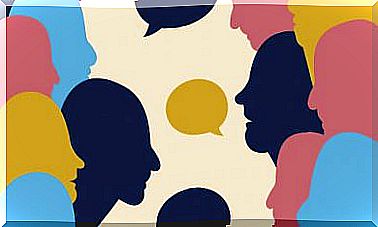Leon Festinger: An Experiment In Cognitive Dissonance

Decision making is put to the test in a cognitive dissonance experiment. But what is cognitive dissonance? Well, it is a sensation that appears derived from a conflict between the ideas, beliefs and values of the subject with their behavior. Cognitive dissonance arises from the incompatibility of thoughts, which creates a state of considerable discomfort in people.
We can then understand cognitive dissonance as a psychological tension. The concept was introduced by Leon Festinger in 1957.
According to the author, this tension forces the subject to create new ideas or skills that relieve tension and are complementary to the subject’s belief system. This theory has been related to decision making; Whenever we decide to do something that conflicts with our beliefs, various strategies are deployed to alleviate this tension.

Leon Festinger: the creator of a revolutionary experiment
Festinger was an American social psychologist born in New York in 1919. His theory of cognitive dissonance has had special relevance in social psychology, especially in the areas of motivation and group dynamics.
The theory is based on the fact that the human being is aware of his actions and whenever he does something with which he does not agree, he has the need to alleviate the dissonance generated.
The cognitive dissonance experiment
The cognitive dissonance experiment was designed by Leon Festinger and his colleague Merrill Carlsmith in 1957. It was carried out with students and consisted of the following steps :
- Boring homework was assigned to a solo student. These tasks were repetitive, hardly arousing any interest. However, the objective of the experiment was not to evaluate the performance of these tasks.
- The student was then asked to convince the next participant on leaving the room that the experiment was fun. In short, they were asked to lie.
- A reward was offered for the lie. Half of the students were offered twenty dollars for lying, while the other half only one dollar.
- The subject who was waiting to enter the experiment (an accomplice to the experiment), told the students that a friend of hers had done the experiment the week before and that she found it boring.
- Subjects lie while being watched. It was noted how this lie was justified.
Cognitive dissonance was present in those students who agreed to lie in exchange for a dollar. They had to convince themselves that this experiment was fun to alleviate the conflict generated.
Why? Because the reward was not good enough to “feel comfortable” with the lie. When it came to justifying their actions, they were especially tense compared to the group that received twenty dollars. The latter, he did it with more naturalness and nonchalance.
The conflict of lies
The cognitive dissonance experiment leaves us with several conclusions. Mainly, the twenty dollar reward group knew perfectly well that the experiment was boring. Likewise, this group also had the necessary justification to say otherwise. Not so the dollar group, where we could see how the subjects convinced themselves to ease the tension generated by insufficient reward.
Conclusion of the experiment
At a final stage, after lying, the main experimenter asked the participants if they really found it funny. In the twenty dollar group, the subjects honestly expressed that the experiment had not been really fun. Paradoxically, the group that had to be convinced by the inconsistency of the reward, reaffirmed the lie and many expressed that they would do it again.
Results of cognitive dissonance
- Avoidant. Subjects tend to avoid any stimulus that causes them to return to the original state of dissonance. Situations, people, ideas and places that confront you again with conflict are avoided.
- Seeking approval. As a consequence of the strategies deployed, the approval of the story or the motives on which the subject convinces himself is sought in others, to justify his actions.
- Comparison. Those who suffer from dissonance tend to compare themselves with other people to justify their actions.

Cognitive dissonance today
60 years have passed since the experiment and today the topic continues to raise questions and open discussions. It has been proposed, for example, as a justification for the defense methods that appear in various psychological pathologies. In turn, it has also been used in the psychosocial analysis of criminals and people who justify their actions by hiding in the group or following orders.
The power of conviction, the relief of guilt
The experiment also questions the human tendency to find psychological and mental relief. The contrast between social norms and day-to-day decisions makes us go through this unpleasant state more often than we would like. The problem appears when, due to this desire to get rid of tension, we end up generating maladaptive behaviors.
In addition, knowing dissonance can help us identify it when we suffer from it. It can also help us to gauge the influence that the information we obtain from our reference group has on us and observe how the norms that constitute it condition our way of acting, thinking or feeling. Finally, note that cognitive dissonance confronts us with our values, causing us to update them or update our way of acting.









